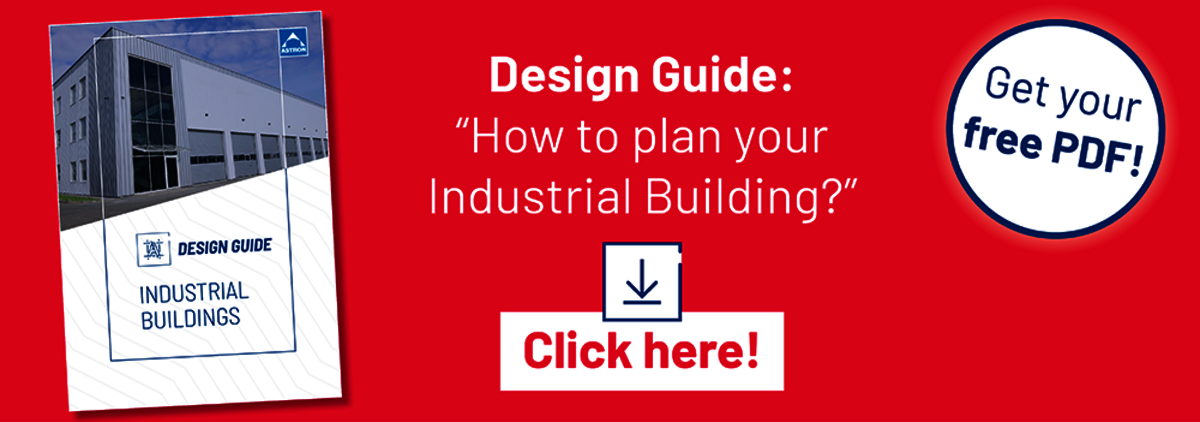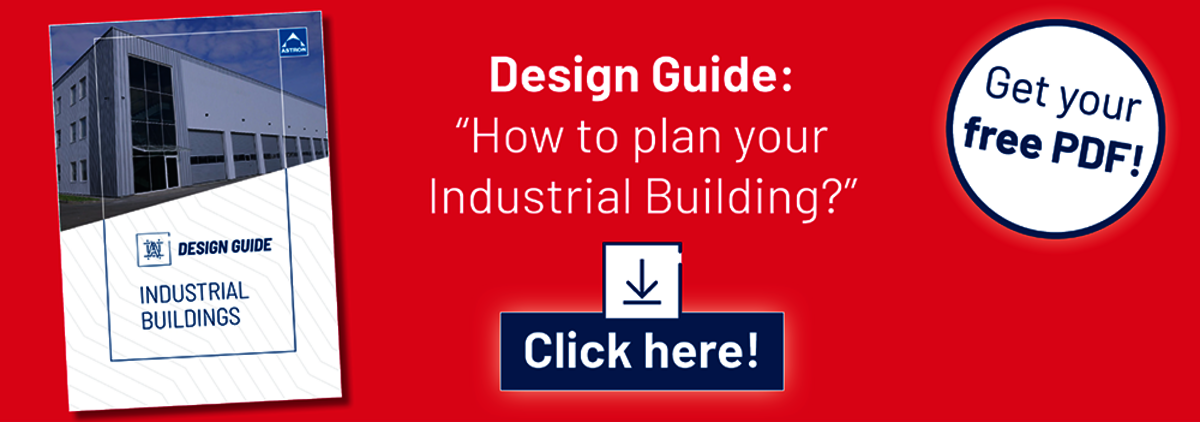
What is the application range of steel industrial buildings?
In industrial construction, steel stands as a force, shaping buildings that endure time and redefine functional and design possibilities. Take the Eiffel Tower, initially just built as a temporary nice entrance arch for the 1889 World's Fair, it become an iconic symbol of Paris and an example of the strength and versatility of steel in construction!
Whether it's a large manufacturing plant, a spacious warehouse, or a functional distribution center, steel industrial buildings offer a multitude of benefits that make them a real asset.
Steel structures offer large possibilities across industries:
Manufacturing buildings
From small machine shops to large industrial multi-building sites, steel has proved its worth in building industrial and manufacturing facilities.
Flexible interiors, efficient floor plans, and variable roof heights are integrated, creating optimized usable space. Steel building systems ensure adaptability, accommodating the evolving needs of manufacturing processes. Many companies trust steel for their production units like Coca-Cola, Guardian, Philips, Komatsu and many others…



Warehouses, storage buildings & logistics hubs
Steel buildings for warehouse and logistics can feature all shapes and sizes and can be adapted to various surface areas and customized to suit various purposes, be it a complex logistic centre, a high-rack store, or a barrier-free bulk cargo hall.
Steel structures is a valuable building material for warehousing and logistics, offering an adapted solution for large-scale facilities. The strength of steel provides the structural integrity needed to support large warehouses and logistics hubs. Steel can be changed to fit different layouts, vast, uninterrupted interior spaces, making it good for efficient storage and movement of goods. The adaptability of steel allows for versatile layouts, accommodating various storage configurations and logistics workflows. The clear spans created by steel frames not only enhance the spaciousness of these structures but also help with the changing needs of the logistics industry. Steel emerges as the material of choice, combining strength with flexibility.
Let’s present a few real-world examples or case studies showcasing successful steel industrial buildings, such as logistics hubs for global giants like Amazon, Gefco, FedEx, Transalliance, Deutsche Post, CFL, Danone, and more…
Office Buildings
From company headquarters to service offices, building systems provide offices that are cost-effective to build, economical to maintain and energy-efficient to operate.
Office buildings – no matter if single-storey, multi-storey or integrated – have long been designed to be more than just functional. They represent the company and its style and serve as a showcase for customer visits. At the same time, the people who work in the offices have high expectations with respect to their working environment.
Customised steel buildings ensure a perfect alignment with customer specific requirements, creating buildings that combine functionality with aesthetic appeal.
Datacenters
For data center construction, steel offers a compelling combination of cost-effectiveness, security, and long-lasting performance. Steel structures provide a robust framework, ensuring data integrity and shielding against external threats. Their cost-efficient design aligns with the demands of modern data management, offering a secure and lasting solution.
Steel's adaptability allows for efficient use of space, ensuring that data centers maximize their footprint while minimizing construction costs. As data continues to grow exponentially, steel's resilience and versatility make it the ideal material for constructing data centers that can seamlessly adapt to future demands.


Sports halls
Steel halls are the perfect fit when it comes to the construction of sports halls because, above all, steel buildings stand for flexibility and individuality in the choice of materials, design and building dimensions. Let’s take the example of football arenas, like the one for the dynamo Kiew with a length of 100 m, width of 72 m and height of 18 m. But we could also mention interior tennis halls, riding halls, velodromes etc.
Steel Halls for Retail Shops and Outlets
Retail shops, retail centers, outdoor malls or standalone outlet buildings for restaurants, grocery stores, clothing and general merchandise can be built in steel. When planning a retail shop, apart from static details and costs, the architecture also needs to be kept in mind. There are numerous retail outlets across Europe that utilize steel structures in their construction. One example is 10,000 m² shopping mall in Luxembourg. This large shopping center features extensive steel framing, creating spacious and visually appealing retail spaces. Additionally, various IKEA stores across Europe often incorporate steel structures for their warehouses and retail areas.
Car Dealerships
Steel offers building solutions for all types of automotive structures. From dealerships and service centers to tire repair and luxurious cars show room, steel allows flexible designs with attractive architectural appeal to fit owner and developer needs.
Aircraft hangars
Airports, hangars, bus and train terminals, commuter or maintenance hubs–these are the buildings that get us where we need to go. Steel buildings offer building solutions for air, rail and bus terminals, aircraft hangars and plane maintenance structures. Steel buildings showcase the inherent strength of steel, providing vast clear spans and robust support. With steel's adaptability, these hangars accommodate the large wingspans of aircraft. For example, Boeing Everett Factory houses the assembly line for Boeing's wide-body aircraft, including the iconic Boeing 747. The facility utilizes extensive steel structures to create vast aircraft hangars.
Public buildings
Civic and public facilities, such as fire stations, museums, military buildings, etc are always looking for low-cost, high performing building structures designed for specific and sustained uses. Whether those needs include services like vehicule maintenance, buildings open to the public etc, or considerations like budget, architectural appearance, flexible interior space, variable roof heights, and long-term cost of ownership for operations and maintenance, steel buildings offer sustainable answers.
Steel industrial buildings stand as combining strength, adaptability, and efficiency across diverse applications. For more information, contact us !









